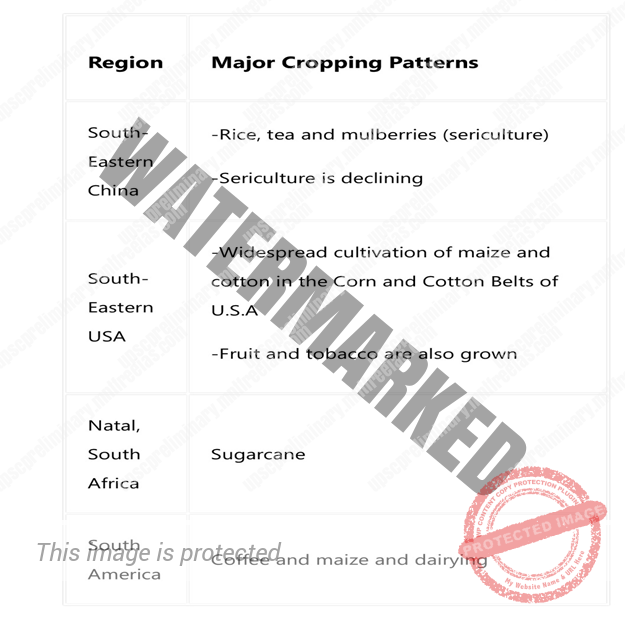- CHINA TYPE CLIMATE
- ECONOMIC DEVELOPMENT
UNIT 4 – CLIMATOLOGY – PART 40
CHINA TYPE CLIMATE
SUMMER
Intense heating within interiors (Tibet, desert region) sets up a region of low pressure in summer attracting tropical Pacific air stream (South-East Monsoon).
Monsoon does not ‘burst’ as suddenly, nor ‘pour’ as heavily as in India.
Typhoons form mostly in late summer, from July to September.
WINTER
In winter, there is intense pressure over Siberia and the continental polar air stream flows outwards as the North-West Monsoon, bitterly cold and very dry.
There is little rain but considerable snow on the windward slopes.
Another climatic feature associated with the China type of climate in southern China is the occurrence of typhoons.
GULF TYPE CLIMATE
Monsoonal characteristics are less intense compared to China type.
There is no complete seasonal wind reversal.
Hurricanes occur in September and October.
NATAL TYPE CLIMATE
The narrowness of the continents and the dominance of maritime influence eliminate the monsoonal elements.
The South-East Trade Winds bring about a more even distribution of rainfall throughout the year
NATURAL VEGETATION
Supports a luxuriant vegetation.
The lowlands carry both evergreen broad-leaved forests and deciduous trees [hardwood].
On the highlands, are various species of conifers such as pines and cypresses which are important softwoods.
Perennial plant growth is not checked by either a dry season or a cold season.
TIMBER
The forests of China and southern Japan also have considerable economic value and Include Oak, Camphor, etc.
South-eastern Brazil, eastern Paraguay, north-eastern Argentina have Parana pine, and the quebracho (axe-breaker, an extremely hard wood used for tanning).
Eastern Australia have Eucalyptus forests.
In Natal palm trees thrive.
The Gulf states of U.S.A. have lowland deciduous forests.
ECONOMIC DEVELOPMENT:
A third of the world’s rice is grown in China, though the huge population leaves very little for export.
Monsoon China has all the ideal conditions for padi cultivation; a warm climate, moderately wet throughout the year, and extensive lowlands with fertile moisture-retentive alluvial soil, which, if necessary, can be easily irrigated.
As the flat lands are insufficient for rice cultivation, farmers move up the hillslopes and grow padi on terraced uplands.

